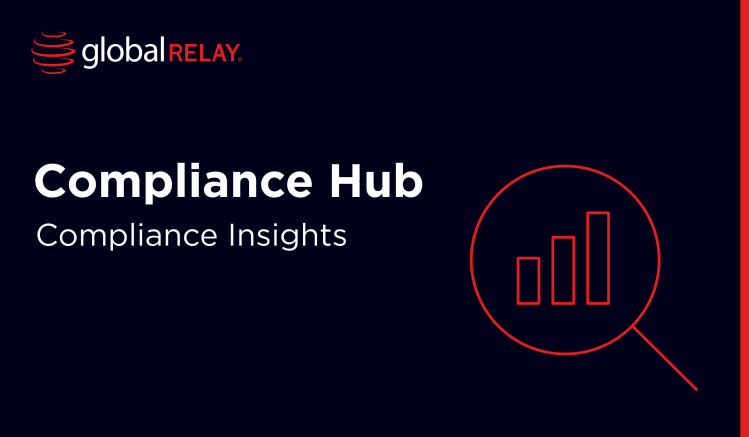
Achieving Litigation Readiness in 2025
The American Bar Association has found that the document review process is the biggest driver of eDiscovery costs, accounting for over 80% of total litigation spend. With that equating to around $42 billion per year, there’s a clear opportunity for saving.
Written by a human
Organizations that invest in meeting litigation readiness can see challenges, including in maintaining data integrity and speed. But those that prepare for legal proceedings on an ongoing basis are also more likely to avoid the operational delays that longer investigations cause. And importantly, save on the costs of fines and productivity damage.
Learn how to prepare for litigation for compliance and legal success in 2025 and why AI-powered tools like Global Relay’s eDiscovery solution can offload much of the manual admin.
The importance of litigation readiness
Litigation readiness refers to how prepared an organisation is against the threat of legal disputes. It therefore encompasses the need to assess, retrieve and produce auditable data for legal cases, all at pace.
Litigation readiness isn’t just a standalone process; it’s a continuous function that also aids with ongoing compliance. In fact, legal readiness is comparable to compliance audit preparation because many of the same documents are required under audits and regulatory investigations.
Under its 2019 Regulation Best Interest (Reg BI) review, FINRA noted the importance of litigation readiness after reviewing the preparedness of a small selection of firms. The regulator’s subsequent report covered various areas of best practice in terms of litigation readiness, including:
- staff training
- inventory of changes
- technology tools
- conflicts of interest inventory
- surveillance best practices
- Disclosure obligations
Similarly, legal data retention has its place under SEC and FCA regulations. In 2024, 26 different firms were collectively fined by the SEC for widespread record-keeping failures. In particular, it was the unpreparedness of firms, including errors in maintaining digital records for presentation, which caused the scale of the fines.
Poor litigation readiness can spiral out of control. More often than not, firms delay investigators, which increases the time associated with investigations, delaying firms in their own operations.
Challenges in achieving true litigation readiness
True litigation readiness is possible, but firms must overcome some common barriers in order to achieve it:
- Maintaining data integrity even under large volumes of data
- Managing cross-jurisdictional data requirements
- Investing in preparedness without tangible success metrics
Maintaining data integrity
Maintaining data integrity refers to a business’s ability to keep data in an accurate state – matching the state it was first input into the system. It’s an important factor for compliance data retrieval.
These days, many platforms offer the ability to make edits or alterations to documents after they’ve been submitted. But letting this happen without changelog recording can lead to unmonitored and unauthorized changes to data.
Businesses that don’t put controls in place to manage this can lack oversight and end up with documentation without changelogs that won’t pass audits or litigation reviews.
Managing cross-jurisdictional data requirements
For businesses that operate across varying jurisdictions, managing the different regulatory requirements can be incredibly complex.
For example, the UK and Europe mandate GDPR as a data protection law, whereas the US has no blanket law. Yet, for businesses with customers in California, the California Consumer Privacy Act (CCPA) applies. And in Brazil, it’s Lei Geral de Proteção de Dados Pessoais.
Each of these regulations covers the same topic (data protection), but has slightly different rules, essentially doubling or tripling the workload. One way for institutions to manage this is by harnessing a compliance program that uses AI to automatically switch its practices based on the jurisdiction of the data, such as Global Relay – removing the need for repetitive and manual work.
Investing in preparedness
While only one third of regulated firms say that the cost of eDiscovery is their primary concern, getting stakeholders on board can still be a hurdle. Without tangible success metrics, it can be hard to paint a picture of the true benefits of litigation preparedness.
But in this case, having no risk event is the goal – making it hard to measure what’s actually working, and to qualify investments.
In order to ensure stakeholders are prioritizing litigation readiness, the opposite approach is sometimes needed. Emphasizing the risks of unpreparedness, including real-life examples like the SEC fines in 2022, can help explain exactly why this process requires investment.
One such example is the remediation awarded by the SEC to HeadSpin, whose CEO falsely inflated its metrics for investment purposes. Because the lawyers and accountants within the company conducted an internal investigation, laying out all the evidence for litigation, removing the CEO and repaying investors pre-emptively, they were rewarded by the regulator.
Benefits of litigation readiness
Litigation readiness for financial services is the best way to provide auditable data that meets the regulatory and legal requirements applying to your business.
The act of readiness preparation in itself mimics an internal audit, like regulatory audit tools. It should reveal any gaps in current documentation to ensure that teams know how to meet their requirements and can make any changes required.
By performing this in an ongoing manner, firms will save on the inflated costs associated with regulatory penalties for unpreparedness. In fact, the cost of eDiscovery compliance tools like Global Relay’s AI-powered legal hold system pales in comparison to these fines.
Thanks to the significant risk reduction associated with legal data retention, companies are also less likely to see a disruption to operations or productivity. That’s due to the documents being readily available and easy to find, preventing investigators from scrambling to find the evidence they need.
Becoming ‘litigation ready’ for compliance
It’s no secret that the SEC has undergone changes in its stances on AI and crypto in recent months, but the regulator has stayed strong on off-channel communications. With no let-up in this area, it’s clear that firms must continue to accurately capture, organize, and archive their documents in preparation for litigation and audits.
For compliance without compromise, choose Global Relay’s eDiscovery. Use real-time AI models to filter out noise and zero in on relevant data, and meet legal requirements by placing compliant legal holds with a single click, without the need for a custodian.
